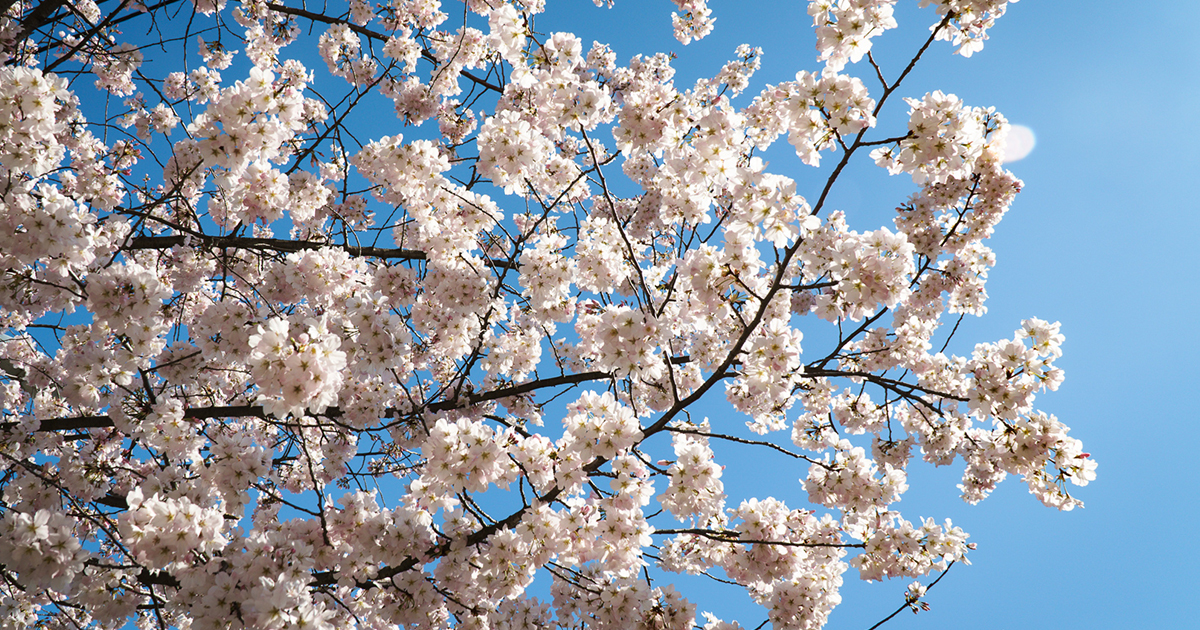THE LEAFLET

We’re Growing Cherry Trees for the National Parks Service
We’ve partnered with the National Parks Service’s National Mall and Memorial Parks on numerous occasions – from Community Tree Plantings to Park Inventories to Tree Tours. So what’s the next step for our growing partnership with National Mall and Memorial Parks? Not just planting and measuring existing trees, but literally growing new ones! We are thrilled for this new development – it’s exciting to do something new with an old, trusted partner and we’re always looking for innovative ways to incorporate our work at our Farm to the city.
For some quick context, the Casey Tree Farm occupies 730 acres of land along the Shenandoah River in Berryville, VA. We have dedicated 100 acres of that land to sustainable tree production using techniques that prioritize long term soil health and productivity, while safeguarding the overall environment. The National Mall and Memorial Parks was established in 1965, incorporating existing park spaces and memorials in Washington, D.C. The 6,546 acres park was established to commemorate presidential legacies, honor the courage and sacrifice of war veterans, and celebrate the United States’ commitment to freedom and equality.
We spoke to the landscape architect for the Mall, Jeffrey (Jeff) Curtis about the past, present, and future of these trees.
Casey Trees (CT): What’s your role at the National Parks Service? What types of projects do you work on?
Jeff Curtis (JC): I’m a landscape architect. It’s no secret that the National Mall is crumbling, so in a sense I work on putting together plans to put stuff back together. These are mostly landscape oriented restoration plans. Day to day, I work on making drawings, parsing out the specifications and scope of works for projects, and help manage contractors that execute those plans. I work specifically on the National Mall and Memorial Parks.
CT: Can you walk us through how our partnership formed?
JC: Sort of! I was working on plans to replace these cherry trees and someone had an idea to get Casey Trees more involved. We had obviously worked with you before to plant trees in our park, so I was brought on to put the agreement and planting plans together for Casey Trees to plant in the Park. Somewhere along the line through that process, the possibility of us utilizing the nursery to grow rare cherry trees was mentioned.
CT: Rare cherry trees? Sounds exciting! Tell us more – where will they go in the city?
JC: They’re ‘rare’ in the sense that you can’t really walk into any nursery and buy them. There aren’t many of them for sale nationally. Although they’re hard to get, they’re culturally significant trees so we want to grow and preserve them in the park. They won’t end up along the Tidal Basin, those are all Yoshino cherries, they’ll replace trees in West Potomac Park, in other spots along the Potomac River by the Roosevelt Memorials and there will even be a few around Hains Point.
Note: here’s the breakdown of the 27 trees we’re growing: three Afterglow Cherry trees, four Shirofugen Cherry trees, three Fugenzo Cherry trees, two Usuzumi cherry trees, and 15 Takesimensis Cherry trees.
CT: Alright so the logistics are worked out, and you have the trees ready to deliver to our Farm so they can be planted and established. What was it like going out to the farm?
JC: It is really pretty out there. I went out with an NPS arborist and we joked that it was like taking our trees to boarding school.
CT: Tell us more about where the trees will end up – what is it like managing a National Park in the middle of a heavily urbanized area?
JC: The National Parks Service is famous for having a conflicting mandate – preservation for utilization. The National Mall and Memorial Parks really illustrate that tension. We’re preserving cherry trees for people to see them, but it’s almost like people love them and the Park too much. The soil is incredibly compacted and it’s really challenging to maintain or establish trees with how heavily the Park gets used.
CT: Why Casey Trees?
JC: It’s really great to have Casey Trees as a partner. It’s hard to budget tree planting into plans, working with you has made this possible. Having Casey Trees be so willing to grow and plant trees is an important part of us preserving the Park. Right now we’re losing more trees than we’re planting, so Casey Trees will be helpful in reducing that deficit.
CT: What are you looking forward to?
JC: I’m looking forward to seeing the amount of missing trees reduced and restoring the canopy of the Park and the city.
CT: What’s next for the trees?
JC: The trees will hang out and grow in the fields in the nursery for 3-5 years until they’re big enough to be planted. They need to be able to withstand the harsh conditions of the Park. Once they’re big enough, we’ll put together a planting plan and with Casey Trees’ help, they’ll replace the exact species of trees that are missing, filling in gaps in the Park.
Thanks for chatting with us, Jeff! In the meantime, feel free to explore our cherry tree maps of the city, read more about the unusual cherry tree species on the Mall, and donate to support our work retreeing every nook and cranny in DC – from nationally renowned hotspots to everyday houses, businesses and parks.
